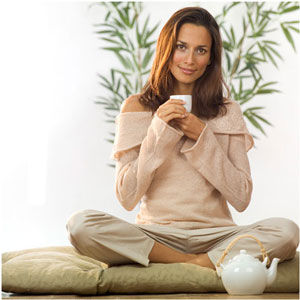Richard
 Bamboo fibre has many excellent properties that make it ideal for processing into textiles. What people find most surprising is that bamboo fabric is exceptionally soft and light, almost silky in feel. This makes it breathable and cool to wear. It is also incredibly hydrophilic, absorbing more water than other conventional fibres such as cotton and polyester.
Bamboo fibre has many excellent properties that make it ideal for processing into textiles. What people find most surprising is that bamboo fabric is exceptionally soft and light, almost silky in feel. This makes it breathable and cool to wear. It is also incredibly hydrophilic, absorbing more water than other conventional fibres such as cotton and polyester.
Bamboo is also very sustainable to grow as it does not require the use of pesticides and grows very quickly in favourable conditions. Bamboo fabric may have an anti-bacterial property that is maintained in fabric, meaning that bamboo fabric does not require the use of chemical antibacterial agents.
Bamboo fabric is more antistatic than other types of fabric and also tends to perform better when it comes to odours it has a natural deodorising property.
Bamboo fibre has a thinness degree and whiteness degree close to normal finely bleached viscose and has a strong durability, stability and tenacity. It stands abrasion and possesses the qualities that make it perfect to spin. The yarn and cloth made by bamboo fiber are labeled first-class quality in all aspects of quality standards.
Bamboo fiber fabric is made from bamboo pulp fiber. It is characterized by having good hydrophilic properties, excellent permeability, soft feel, easiness to straighten and dye and splendid colour effect of pigmentation. It is also an environment-friendly raw material that enjoys a splendid prospect for application as its predecessor wood pulp fiber. Meanwhile cloth made by the mixed texture of bamboo fiber and cotton or other raw materials also boasts the same superior property. Towel and bathrobe made of bamboo fiber have a soft and comfortable feel and a special lustre. When dyed, it is sparkling and beautiful.
It has the strength of steel. It's a favourite of panda bears. And now, it is also a soft and beautiful fabric similar to rayon. This durable material has a natural sheen and inherent anti-microbial properties to help keep you odour free. Bamboo is an incredibly sustainable resource, since it's fast-growing and resilient. Bamboo is actually not a wood, it's a grass. Unlike a tree, which can take decades to grow to maturity, bamboo is ready to harvest within 4 to 5 years.
Bamboo fabric is a natural textile made from the pulp of the bamboo grass. Bamboo fabric has been growing in popularity because it has many unique properties and is more sustainable than most textile fibers. Bamboo fabric is light and strong, has excellent wicking properties, and is to some extent antibacterial. The use of bamboo fiber for clothing was a 20th century development, pioneered by several Chinese corporations.
Bamboo fiber resembles cotton in its unspun form, a puffball of light, airy fibers. Many companies use extensive bleaching processes to turn bamboo fiber white, although companies producing organic bamboo fabric leave the bamboo fiber unbleached. To make bamboo fiber, bamboo is heavily pulped until it separates into thin component threads of fiber, which can be spun and dyed for weaving into cloth.
Anti-bacterial: 3 times more effective than Cotton Products (claimed)
Anti-static: 12 times more effective than Cotton Products
Hygroscopic: 60% improvement in Comparison with Cotton Products
Deodorization: 30 % improvement in Comparison with Cotton Products